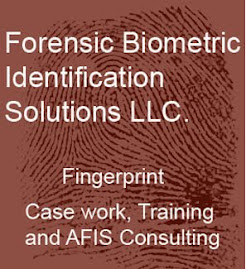I was pretty shocked to see that the requirements for fingerprint pattern classification training in some latent fingerprint certification programs is being dumbed down, to the point that the individual on the jury who earned a Boy Scout fingerprint merit badge might have had more training in fingerprint pattern recognition than the "latent expert". Fingerprint pattern recognition is not just Loops, Arches and Whorls but the ability to locate the pattern area, delta, core and sometimes tracings, a knowledge of which has often aided me in manual latent searches/comparisons.
I do realize that in many of today's automated fingerprint identification systems (AFIS), pattern is no longer a search filter. The examiner no longer needs to identify the fingerprint pattern as part of the latent fingerprint search. I would point out that probably 75% of the latent searches at the local agency level are not AFIS searches but elimination or suspect searches and a knowledge of pattern type to include things like; tracings, allow the latent examiner to more quickly and accurately do a comparison. The FBI IAFIS limits latent searches to less than a 30% penetration of the database, fingerprint pattern is a very effective way to meet that limitation. In my experience it is not uncommon to discuss difficult latent identifications in a Forensic Unit, to resolve any issues with the latent comparison (distortion, etc.) or as a training example for other latent examiners. The most effective way to discuss a latent print because of the small ridge detail is using the focal points that latent examiners understand, these are the focal points we learned in our basic fingerprint pattern recognition training. If the latent expert understands what is meant by typelines, tracings, how to determine the correct delta, core and ridge counting, the latent examiner can direct another examiner to the area of interest.
While the requirements in some certification programs for pattern recognition have been lowered, individual agencies have the ability to exceed the basic requirement and give their latent examiners a stronger fingerprint foundation in pattern recognition.
Bob McAuley
Dir. Operations/Training
Forensic Biometric Identification Solutions LLC.
http://www.linkedin.com/in/fingerprintconsultingservices
http://fingerprintconsultingservices.com/
Subscribe to:
Post Comments (Atom)






No comments:
Post a Comment